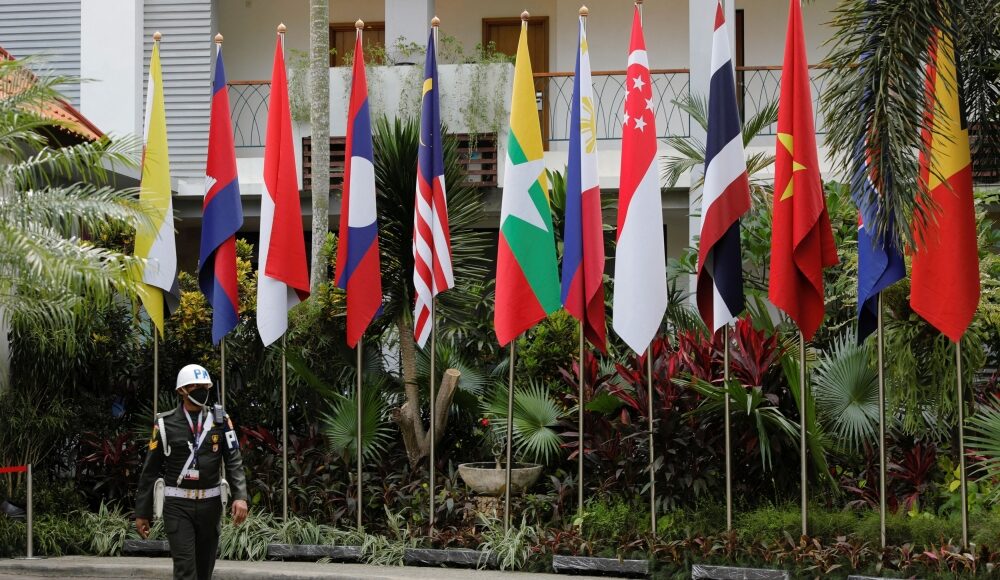APRIL 28 — In an era increasingly shaped by geopolitical polarisation, regional organisations are under pressure to evolve or risk irrelevance.
Among these, the Association of Southeast Asian Nations (ASEAN) and the Shanghai Cooperation Organisation (SCO) stand out — not because they are perfect, but because they have adapted pragmatically to the challenges of a fragmented world.
Despite differing origins, institutional philosophies, and geopolitical alignments, both organisations share a deep pragmatism that has preserved their cohesion. Their ability to work together, even across seemingly profound differences, offers an important lesson on the art of regional diplomacy — one that could eventually include the Gulf Cooperation Council (GCC) as part of a broader architecture to secure and anchor Asia’s future, without alienating major players like Japan and South Korea.
At their core, ASEAN and the SCO are products of pragmatic multilateralism. Neither was conceived as an ideological bloc. ASEAN, founded in 1967, enshrined non-interference as a sacred principle, allowing newly independent Southeast Asian states to preserve sovereignty while promoting dialogue over confrontation.
Likewise, the SCO, established formally in 2001 and rooted in the earlier Shanghai Five framework, institutionalised mutual respect for sovereignty, territorial integrity, and non-interference, particularly crucial for a membership ranging from China and Russia to Central Asian republics, each with different political systems and national priorities. This shared commitment to sovereignty and consensus-building has enabled both ASEAN and the SCO to navigate internal contradictions and external pressures without disintegration.
Both organisations also share a preference for what scholars call “soft institutionalisation.” ASEAN’s “ASEAN Way” — emphasising informality, non-binding agreements, and consensus decision-making — has often frustrated Western observers expecting treaty-based enforcement. Yet, this flexible approach has proven remarkably resilient. Similarly, while the SCO possesses a Charter and a Secretariat, it emphasises voluntary cooperation over strict compliance.
Whether addressing counterterrorism, trade facilitation, or cultural exchange, the SCO relies on dialogue and gradualism rather than heavy-handed enforcement. This shared operating style has given both ASEAN and the SCO remarkable staying power in a world where rigid alliances often fracture under stress.
ASEAN, founded in 1967, enshrined non-interference as a sacred principle, allowing newly independent Southeast Asian states to preserve sovereignty while promoting dialogue over confrontation. — Reuters pic
Moreover, both prioritise security through dialogue, not alliances. ASEAN’s regional security mechanisms — the ASEAN Regional Forum (ARF) and the ASEAN Defence Ministers’ Meeting-Plus (ADMM-Plus) — avoid mutual defence pacts, instead promoting preventive diplomacy, capacity-building, and confidence-building measures. The SCO, likewise, emphasises collective responses to terrorism, separatism, and extremism without transforming into a military bloc like NATO.
Its joint exercises and information-sharing initiatives strengthen regional stability while preserving member states’ strategic autonomy.
Yet, it is their ostensible differences that make their partnership even more promising. ASEAN is geographically compact and focused on Southeast Asia’s maritime core, whereas the SCO spans the vast Eurasian heartland, linking East, Central, South Asia, and even parts of Europe through its observer and dialogue partners.
Their issue areas have also differed: ASEAN initially prioritised economic development and integration, while the SCO began with security cooperation, only later expanding into trade, finance, and cultural collaboration.
Geopolitically, ASEAN maintains a careful neutrality between the United States and China, functioning as a neutral broker, while the SCO remains more centered around Sino-Russian leadership, despite the inclusion of India and others that add internal diversity.
Far from obstructing cooperation, these differences create synergies. ASEAN’s neutrality makes it an ideal bridge linking East Asia with Central and South Asia, where the SCO’s influence is stronger.
The SCO’s Eurasian reach complements ASEAN’s maritime focus, opening pathways for cross-regional infrastructure, digital, and energy connectivity through initiatives like the Belt and Road Initiative, ASEAN Connectivity 2025, and emerging economic corridors. ASEAN’s strength in economic integration dovetails with the SCO’s growing interest in diversifying beyond security.
Both organisations recognise the importance of multipolarity and regionalism in resisting the destabilising effects of great-power rivalry, making collaboration a strategic necessity rather than a luxury.
Importantly, their collaboration need not be confined to bilateral channels. The GCC, representing a dynamic grouping of Gulf Arab states, is increasingly asserting its own regional and inter-regional diplomacy.
Given the GCC’s own emphasis on sovereignty, dialogue, and economic diversification, it is well-positioned to work alongside ASEAN and the SCO. By bridging the Gulf, Central Asia, Southeast Asia, and East Asia, these three organisations can form an extended arc of cooperation that anchors the broader Asian landmass and maritime space.
Such a structure could stabilise key trade routes, strengthen energy and technology partnerships, and foster cross-cultural dialogue on a continental scale. Crucially, this expanded partnership can proceed without alienating Japan and South Korea — two major economies that have deep stakes in both Southeast Asia and Eurasia. Rather than being shut out, Tokyo and Seoul can be engaged through complementary initiatives, ensuring that the broader Asian framework remains inclusive rather than exclusionary.
Already, seeds of this broader connectivity are visible. ASEAN is deepening ties with the GCC through frameworks like the ASEAN-GCC ministerial meetings. The SCO is exploring more dialogue partnerships beyond Eurasia, and the GCC has increasingly participated in discussions on Asian security, energy transitions, and digital economy issues. If nurtured wisely, this evolving architecture can provide the region with new mechanisms for stability and prosperity, independent of yet not antagonistic to the existing great power system.
In a world fractured by rivalries, ASEAN, the SCO, and the GCC — each with their own experiences of managing diversity, asserting sovereignty, and adapting to change — demonstrate that regionalism need not be defined by exclusion or hegemony.
Their cooperation offers a quiet yet profound rebuttal to the idea that only like-minded states can work together.
Sometimes, it is precisely the differences — when handled with pragmatism and mutual respect — that create the strongest foundations for peace and progress.
If Asia’s future is to be more stable, inclusive, and resilient, it will not come from mimicking rigid alliance systems of the past. It will emerge from flexible, pluralistic regional networks — networks that ASEAN, the SCO, and the GCC are uniquely placed to build together.
As and when Asia is well represented by all these regional organisations, then extending the outreach with the European Union (EU) for that matter the Organisation of Security and Cooperation (OSCE), both in the heart of Europe, would not seem like a stretch whether it is based on Free Trade Agreements (FTA) or Digital Economic Framework Agreement (DEFA).
At a time when a Trumpian world is wrecking havoc, a regional organisation by regional organisation link up is the wisest form of statecraft. It is based on mutual respect and absolute gains.
* Phar Kim Beng is Professor of ASEAN Studies at the International Islamic University Malaysia, and a Senior Research Fellow at the Asia Europe Institute.
** This is the personal opinion of the writer or publication and does not necessarily represent the views of Malay Mail.





